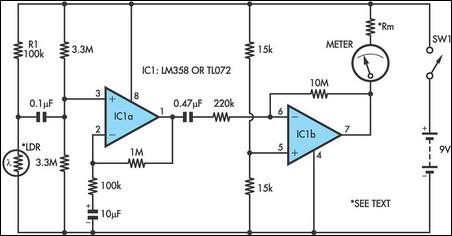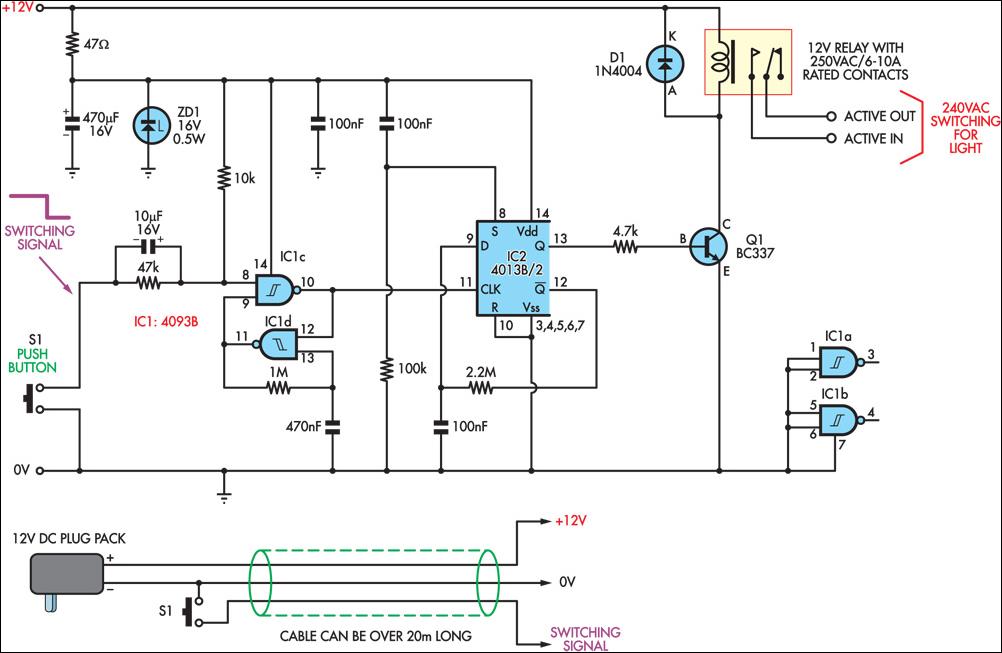
Low-voltage monitor

This circuit monitors the voltage of a battery and warns the operator when the battery voltage is below a preset level by turning on an LED. The values are set for a 12V automobile battery. The preset value is 10 volts.
The circuit design consists of a voltage divider, a comparator, and an LED indicator. The voltage divider is created using two resistors, which reduce the 12V battery voltage to a lower level suitable for the comparator's input. The values of these resistors can be calculated based on the desired threshold voltage of 10 volts.
The comparator, typically an operational amplifier configured in a non-inverting mode, compares the reduced voltage from the voltage divider with a reference voltage set to correspond to 10 volts. When the battery voltage falls below this threshold, the output of the comparator switches states, signaling that the battery is under-voltage.
The output of the comparator is connected to an LED through a current-limiting resistor. When the comparator output goes high (indicating the battery voltage is below 10 volts), it allows current to flow through the LED, lighting it up and providing a visual warning to the operator.
To enhance the circuit's reliability, a hysteresis feature can be added by incorporating feedback from the comparator output to the non-inverting input. This prevents the LED from flickering when the battery voltage hovers around the threshold level.
Overall, this battery monitoring circuit is a simple yet effective solution for ensuring that automotive batteries do not fall below a critical voltage level, thereby extending battery life and preventing potential vehicle malfunctions.This circuit monitors the voltage of a battery and warns the operator when the battery voltage is below a preset level by tumingon an LED. The values are set for a 12V automobile battery The preset value is 10 volts.
The circuit design consists of a voltage divider, a comparator, and an LED indicator. The voltage divider is created using two resistors, which reduce the 12V battery voltage to a lower level suitable for the comparator's input. The values of these resistors can be calculated based on the desired threshold voltage of 10 volts.
The comparator, typically an operational amplifier configured in a non-inverting mode, compares the reduced voltage from the voltage divider with a reference voltage set to correspond to 10 volts. When the battery voltage falls below this threshold, the output of the comparator switches states, signaling that the battery is under-voltage.
The output of the comparator is connected to an LED through a current-limiting resistor. When the comparator output goes high (indicating the battery voltage is below 10 volts), it allows current to flow through the LED, lighting it up and providing a visual warning to the operator.
To enhance the circuit's reliability, a hysteresis feature can be added by incorporating feedback from the comparator output to the non-inverting input. This prevents the LED from flickering when the battery voltage hovers around the threshold level.
Overall, this battery monitoring circuit is a simple yet effective solution for ensuring that automotive batteries do not fall below a critical voltage level, thereby extending battery life and preventing potential vehicle malfunctions.This circuit monitors the voltage of a battery and warns the operator when the battery voltage is below a preset level by tumingon an LED. The values are set for a 12V automobile battery The preset value is 10 volts.





